Tuscany Cinghiale festival a great way to pig out on Italian history
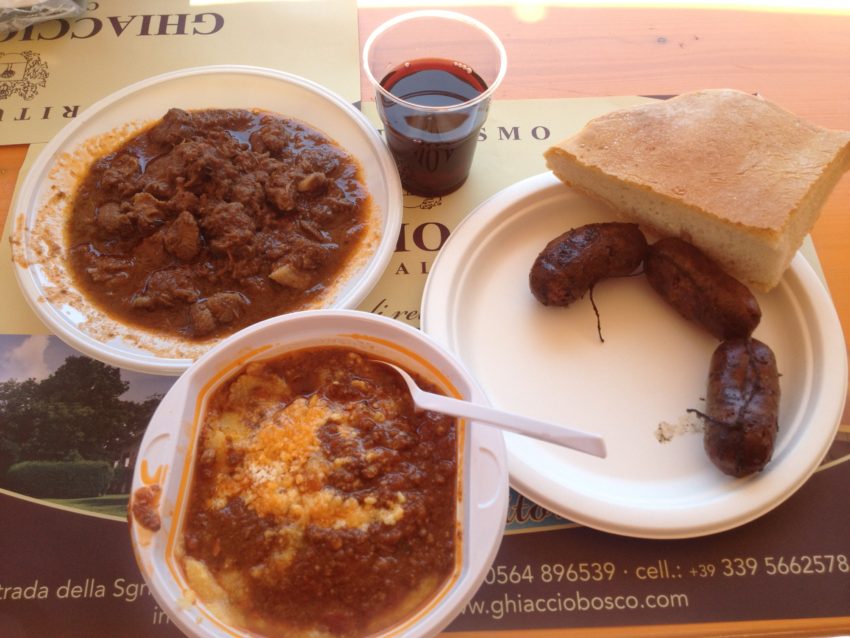
SEPT. 18
CAPALBIO, Italy — The sweet, smoky aroma drifted down the hill like a cloud of barbecue sauce. Salty. Meaty. Tangy. The smell grew stronger as I chugged my way up this tiny town in the southwest corner of Tuscany. You don’t need a guide book to find good food in Tuscany.
You just need a nose.
Tuscany has a cuisine that matches its art in quality and international respect: extra virgin olive oil that’s arguably the best in the world; the Florentine steak, thicker than anything you’ll find in the U.S.; pappardelle pasta, the wide, flat noodle perfect with meat sauces; liver crostini, toast covered in liver pate. But for my money, after this weekend trip to the tiny hill ville of Capalbio (Caw-PAUL-bio), I will crawl from my chaotic streets of Rome for one food.

Cinghiale.
Wild boar. Huge, beefy, black pigs with curved horns, a demonic reputation and a demeanor to match. Tuscany is lousy with cinghiale. You can see them in forests, in national parks, even outside some rural hotels. No wonder the cinghiale is Italy’s national wildlife symbol. Hanging around Roman men and women for the last eight months, I thought it would be the peacock. However, a peacock feast probably wouldn’t draw much of a crowd.
Capalbio’s Sagro del Cinghiale sure does. For the last 49 years, Capalbio has had a five-day cinghiale festival every September. I came with two hungry friends: Alessandro, my best sportswriting buddy and Italian food maven, and Robert, an Australian-Italian English teacher who returned to Rome nine months ago to get in touch with his roots, not to mention his stomach.
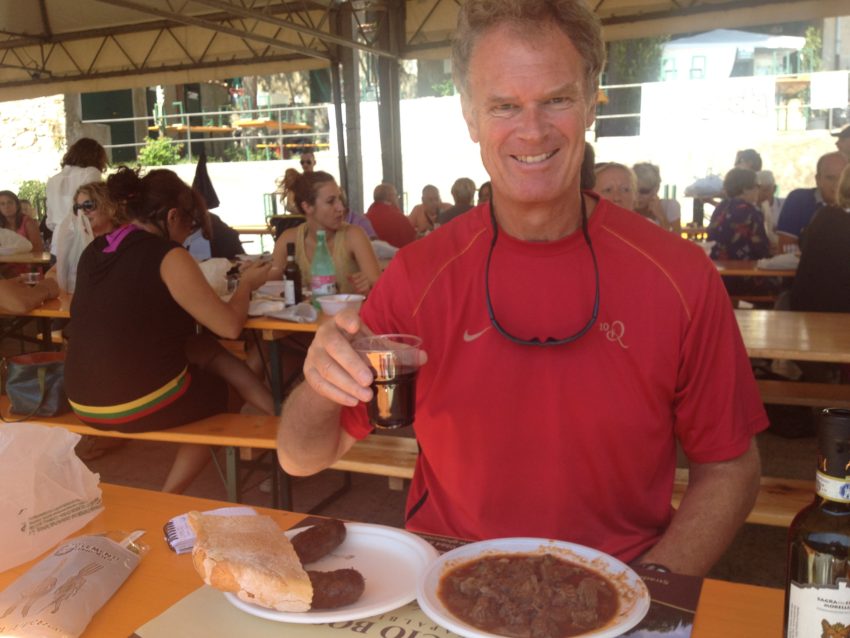
We weren’t just taking part in a feast. We were taking part in history. Cinghiale in Italy goes back to the time of the Ancient Greeks in the 5th century B.C. During their invasion of the peninsula, Greek sailors found so many cinghiale on one island they renamed it Kapros, the Greek word for boar. The Italians tweaked the word to what is now known as Capri.
Go through Italy’s museums and inevitably you’ll find a painting depicting near-naked hunters carrying spears standing around a bloody corpse of a giant pig. During the Renaissance, Tuscans associated the cinghiale’s tusks and black coat with Satan. Today, in Florence’s Mercato Nuovo, stands a 17th century bronze statue of a wild boar. Even just south of Rome, they were placed on the hunting estate of Castelporziano for Pope Pius VII in the early 18th century. They’ve been there ever since.
This was no chicken feed I was attending.
The grounds for the feast are as modest as this town. A series of small, white, pointy tents shade a series of picnic tables where people sit with paper plates piled high with cinghiale steaks, cinghiale sausage, cinghiale cacciatore, cinghiale with polenta, cinghiale with black olives among others. Bottles of special cinghiale festival wine are lined up in the middle like pins in a suburban St. Louis bowling alley. I ordered the cacciatore and the sausage which seemed to be the most traditional dishes. After all, “cacciatore” is the Italian verb meaning “to hunt.” It was a big pile of juicy chunks of reddish-brown beef covered in so much gravy it looked like a soup. The tender meat nearly melted in my mouth as the gravy slid down my throat like the best barbecue sauce I ever had in rural Texas. The three sausage links were as black as night sticks. Cutting them open you can see the guts nearly taken out of the pig whole. But the taste was nothing like Rome’s disgusting street food removed from various animals’ intestines. This sausage was sweet, dry and tender. If Capalbio was commercial enough to offer hotdog buns, it could wipe out bratwurst from every baseball stadium in the major leagues.
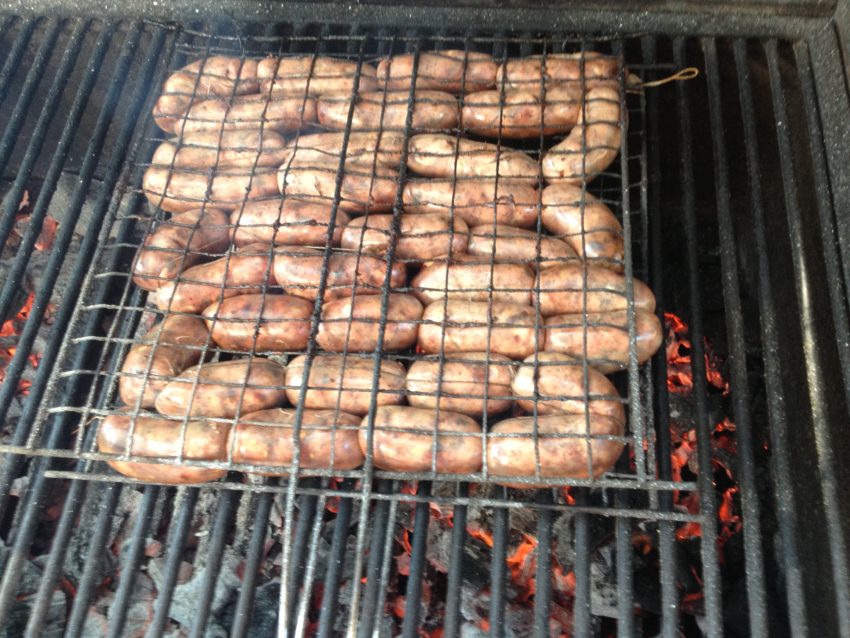
Food doesn’t just feed my soul. It feeds my brain. I get curious. I had to learn more about how this vicious animal became such a popular treat. The only love Tuscans have for the wild boar is the flavor. There is no sentimental value when
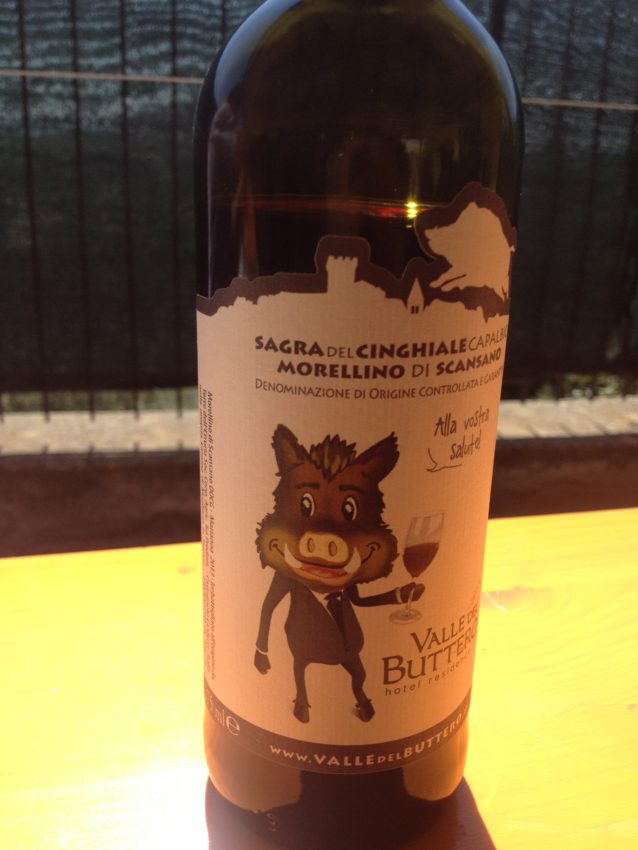
I knew that the rich forests of this Maremma area of southwest Tuscany were particularly plentiful of cinghiale. The locals say the forests’ chestnuts make their cinghiale the tastiest in Italy. They’re also huge. They can get up to 3 feet tall at the shoulders and weigh up to 400 pounds. They sharpen their tusks on rocks and trees. Let’s see those cowardly American deer hunters go after these guys.
I remember one time in the Amazon. A favorite question I ask people living among wild animals is what’s the one thing you fear the most. In the Amazon, where seemingly 90 percent of the living creatures can kill you, a number of natives told me it was the wild boar, the peccary, as they call it. They’re not particularly attracted to human flesh. They’re just vicious. They’ll kill you on general principle. They are the street gangs of the jungle.
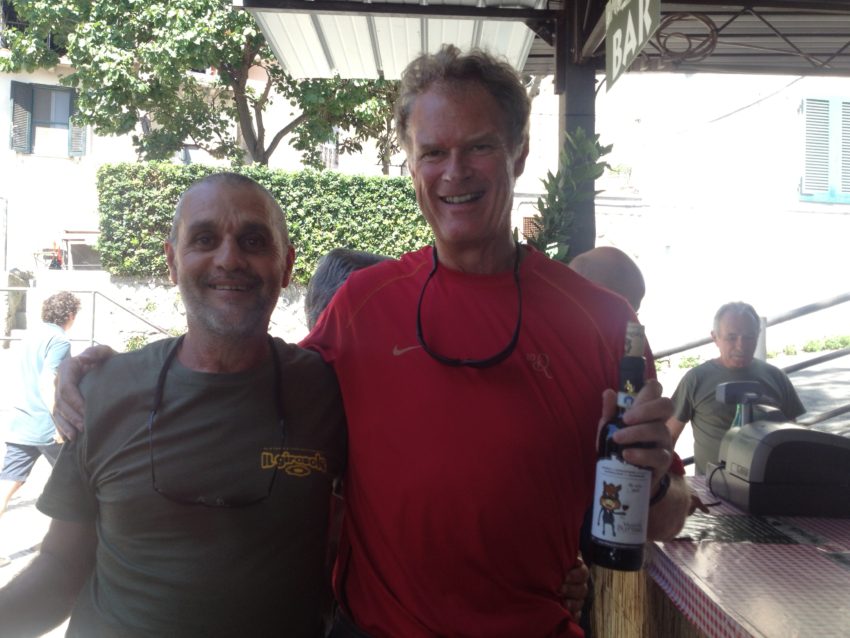
I asked to meet the head cook and I was introduced to Maurizio Pelligrini, a short, wiry, balding man with a silver goatee. Pelligrini told me 60 wild boar were killed for this feast, producing 1,000 pounds of cinghiale a day. It’s enough to serve 1,000-1,200 people daily, including a piggish 2,000 on Saturday night. We were long gone by then. We went to a nearby beach and passed out in a major food coma.
Pizza? Pasta? You’ve met your match.

